Teacher Guides
Ekphrastic Poetry Lesson
How can an image inspire a poem?
This lesson plan guides students to write a ten line poem inspired by a work of art.
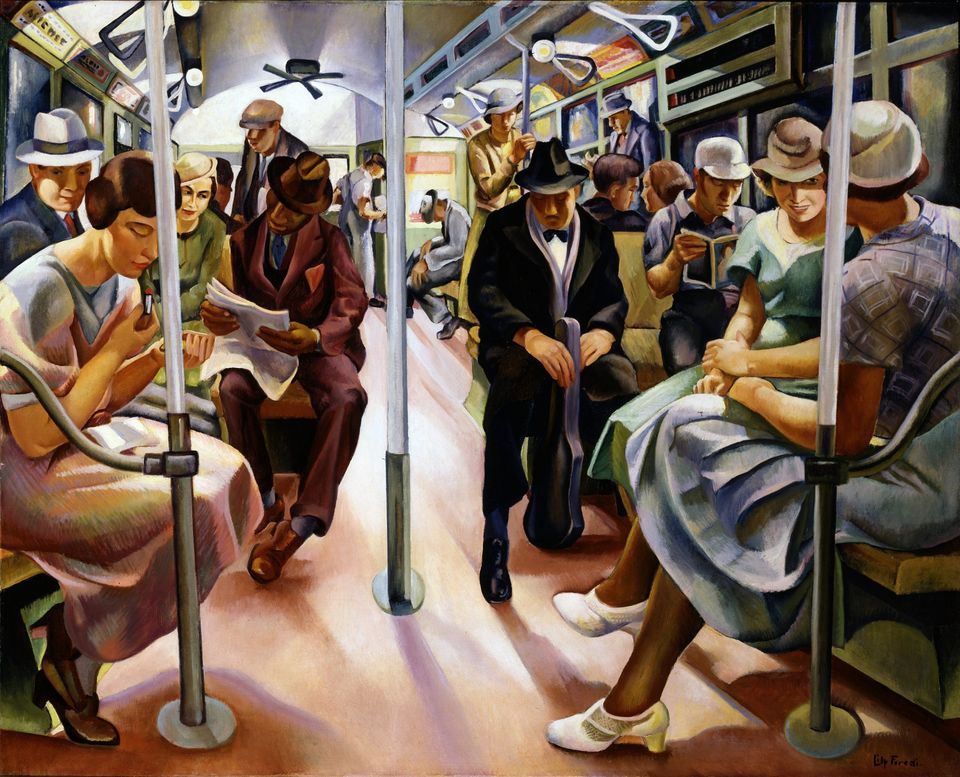
Lily Furedi, Subway, 1934, oil on canvas
Primary Subject and Grade: 4-12 Language Arts, 5-12 Visual Arts
Components: Lesson Plan, Images, Student Activities
Standards: Language Arts K–12.1 Reading for Perspective; K–12.4 Communication Skills; K–12.5 Communication Strategies.
Visual Arts K–12.6 Making Connections Between Visual Arts and Other Disciplines; K–12.4 Understanding the Visual Arts in Relation to History and Cultures; K–12.3 Choosing and Evaluating a Range of Subject Matter, Symbols, and Ideas.
Harlem Heroes
How do Carl Van Vechten's photographs illuminate leading literary figures of the Harlem Renaissance?
This teacher guide provides contextual information, key images, and discussion questions to accompany the exhibition Harlem Heroes: Photographs by Carl Van Vechten, featuring writers Nora Zeale Hurston and Langston Hughes.
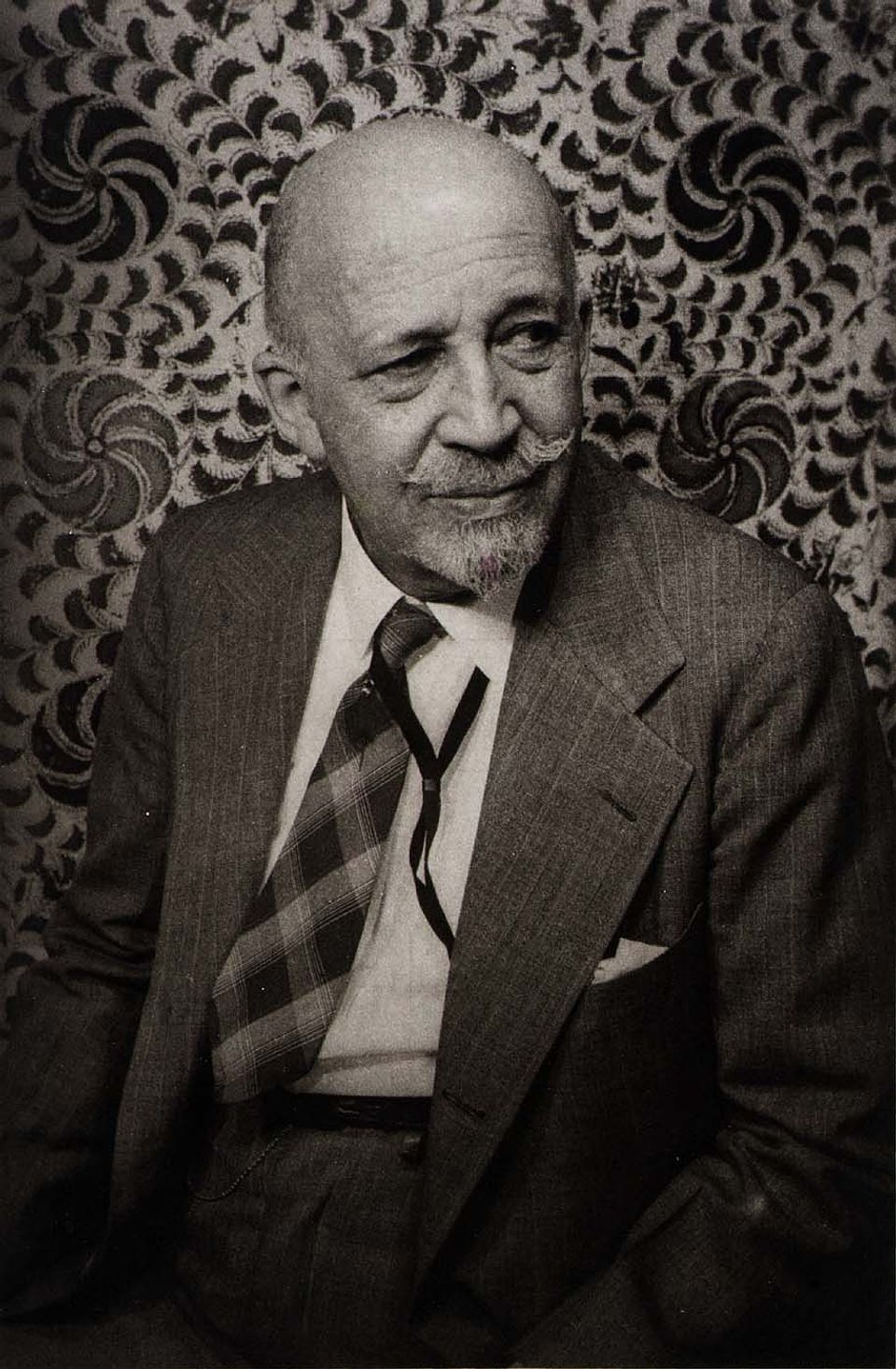
Carl Van Vechten, Richard Benson, W.E.B. DuBois, from the portfolio 'O, Write My Name': American Portraits, Harlem Heroes, 1936, printed 1983, photogravure
Primary Subject and Grade: 5-12 Social Studies, Language Arts, Visual Arts
Secondary Subject and Grade: Music
Components: Teacher Guide, Looking Questions
Standards: This teaching resource supports these concepts:
- Cite pieces of visual and textual evidence to support analysis and inferences drawn from the text.
- Determine the central ideas of an artwork and how they are conveyed through particular details.
- Determine the meaning of symbols as they are used in a visual text, including figurative, connotative, and technical meanings. Analyze the impact.
- Analyze the structure an artist uses to organize a text, and how it fits into the overall structure and contributes to the development of the ideas.
- Determine an artist’s point of view and explain how it is conveyed.
- Compare and contrast a visual text to audio, video, or multimedia sources, analyzing each medium’s portrayal of the subject.
- Trace and evaluate the argument and specific claims presented, distinguishing claims that are supported by reasons and evidence from claims that are not. Assess whether the reasoning is sound and the evidence is relevant and sufficient to support the claims.
- Analyze a case in which two or more texts provide conflicting information on the same topic and identify where the texts disagree on matters of fact or interpretation.
Telling Stories: Norman Rockwell
How does Norman Rockwell tell a story in a single frame?
Artworks featured in the Telling Stories: Norman Rockwell teacher guide
This teacher guide provides background information, key images, and lesson plans that can be used either in conjunction with a museum visit or in the classroom.
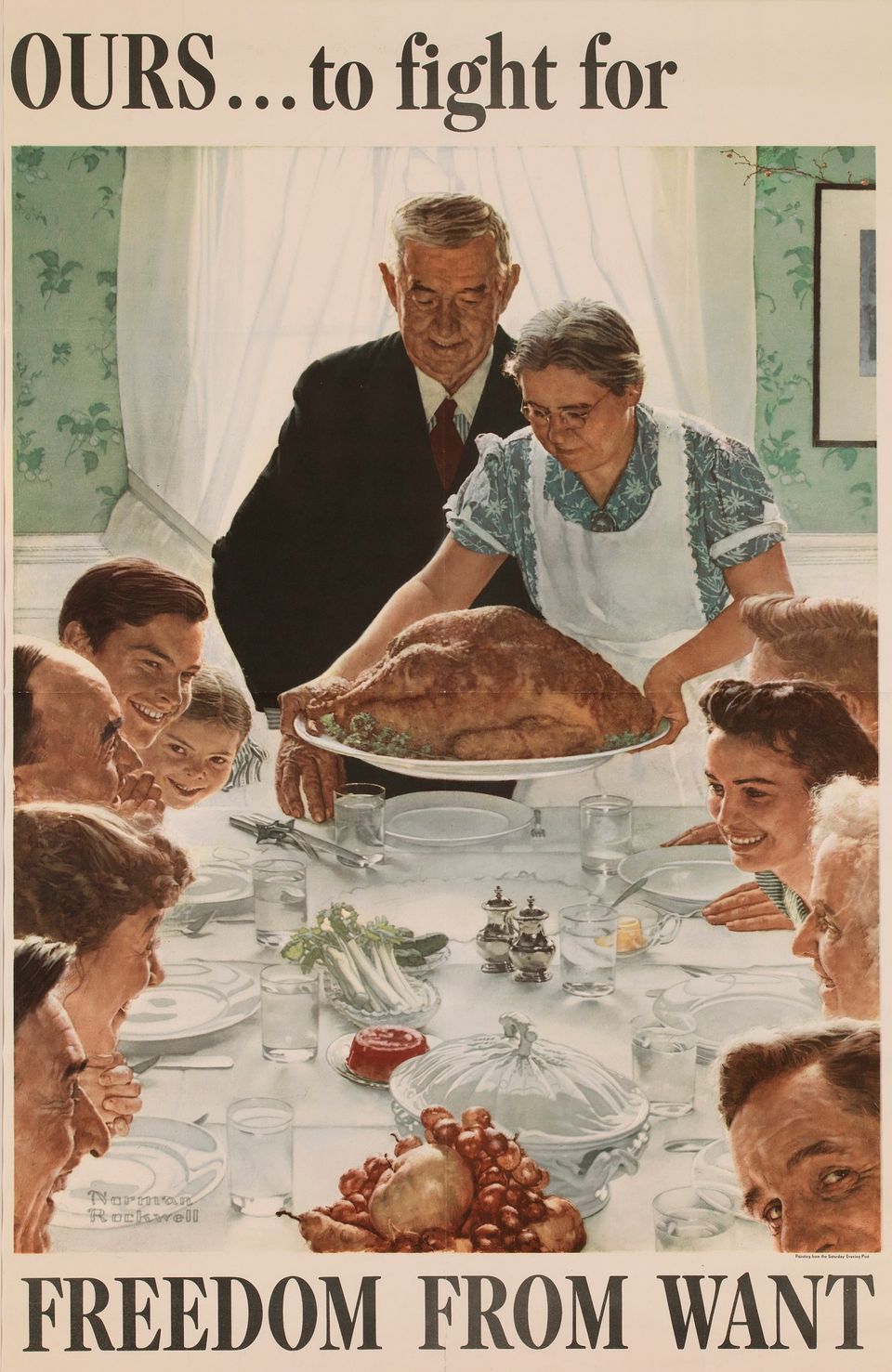
Norman Rockwell, Freedom from Want, 1943, offset color lithograph on paper
Primary Subject and Grade: U.S. History 512, Visual Arts 512, Language Arts 5-12
Components: Lesson plan, images, Student Activities, background information
Standards: U.S. History Era 7: The Emergence of Modern America (1890-1930); Era 8: The Great Depression and World War II (1929-1945): Era 9 Postwar United States (1945 to early 1970s).
Visual Arts K–12.6 Making Connections Between Visual Arts and Other Disciplines; K–12.4 Understanding the Visual Arts in Relation to History and Cultures; K–12.3 Choosing and Evaluating a Range of Subject Matter.
Language Arts K–12.1 Students read a wide range of print and non-print texts to build an understanding of texts, of themselves, and of the cultures of the United States and the world.; K–12.3 Students apply a wide range of strategies to comprehend, interpret, evaluate, and appreciate texts.
Download Artworks (PDF) featured in the Telling Stories: Norman Rockwell Teacher Guide
Videos
You’ve Got Style: Identity and Self-Expression
In this episode of SAAM's award-winning web series Re:Frame, join host Melissa as she crisscrosses the Smithsonian to learn about Mickalene Thomas's Portrait of Mnonja (2010).
Art as Allegory: A Godlike George Washington
Constantino Brumidi's study for the massive painting that appears on the ceiling in the rotunda of the United State Capitol is steeped in history and mythology, from George Washington being depicted as Zeus to Jefferson Davis being vanquished by Athena.
Storytelling and Resilience Teacher Workshop
Examine stories of resilience found in the Smithsonian American Art Museum's collection and discover how you might use these artworks to spark your students’ spirits for learning.
Second Impressions: Images, Slogans, and Influence Teacher Workshop
Consider how constructed images and words work to influence our behavior in subtle ways. Practice a Project Zero thinking routine to hone students' critical thinking and media literacy skills through close looking and reading.
More Resources
Explore Literary Themes through American Art
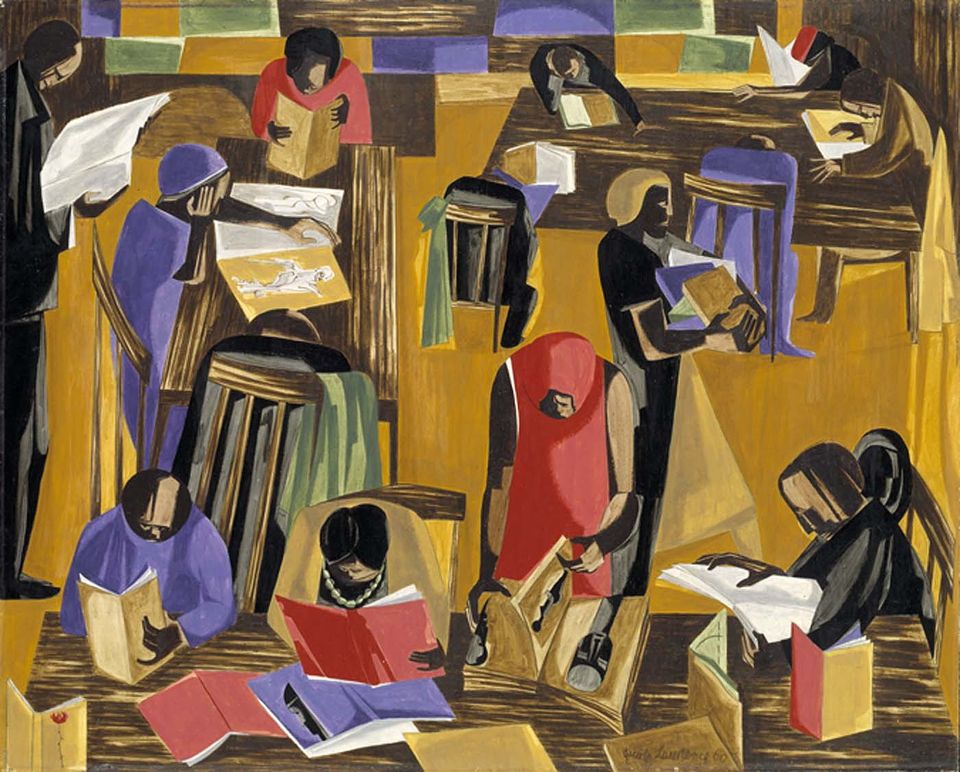
Jacob Lawrence, The Library, 1960, tempera on fiberboard, Smithsonian American Art Museum, Gift of S.C. Johnson & Son, Inc., 1969.47.24
Discover how common themes–conflict and adversity, freedom and social change, heroes and leaders, humans and the environment, immigration and migration, invention and progress–play out across three centuries of American art with the education resource The American Experience in the Classroom.
Critical Thinking in Action

Josh Simpson, Megaplanet, 2005, glass, Smithsonian American Art Museum, Gift of Stewart Gordon Rosenblum in memory of his parents, Elmer M. and Harriet G. Rosenblum, 2018.13, © 2005, Josh Simpson
Discover hidden stories, make connections, and consider contexts and multiple perspectives. These 60-to-95-minute units are teacher-reviewed and classroom-tested.
Teaching Literary Devices through Art

Helen Lundeberg, Double Portrait of the Artist in Time, 1935, oil on fiberboard, Smithsonian American Art Museum, Museum purchase, 1978.51
This distance learning lesson plan demonstrates how artworks may be used to teach common literary devices such as metaphor, irony, symbolism, mood, foreshadowing, and more.
Seeking Community
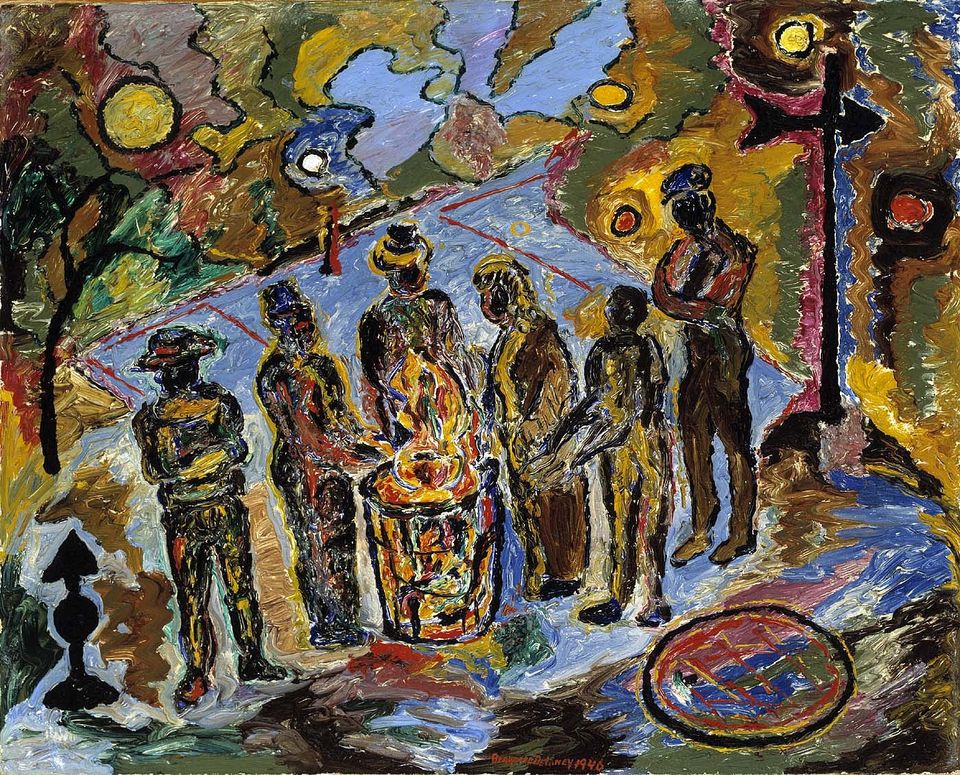
Beauford Delaney, Can Fire in the Park, 1946, oil on canvas, Smithsonian American Art Museum, Museum purchase, 1989.23
With this distance learning lesson plan, students will apply their existing knowledge of figurative and sensory language to the exploration of multiple texts and compare/contrast how an author’s use of such elements, not unlike an artist’s, might help individuals gain a broader understanding of community.
Westward Expansion

Emanuel Gottlieb Leutze, Westward the Course of Empire Takes Its Way (mural study, U.S. Capitol), 1861, oil on canvas, Smithsonian American Art Museum, Bequest of Sara Carr Upton, 1931.6.1
This distance learning lesson plan invites students (8th grade) to use an artwork to support their analysis as they examine American identity in light of the story of westward expansion.














